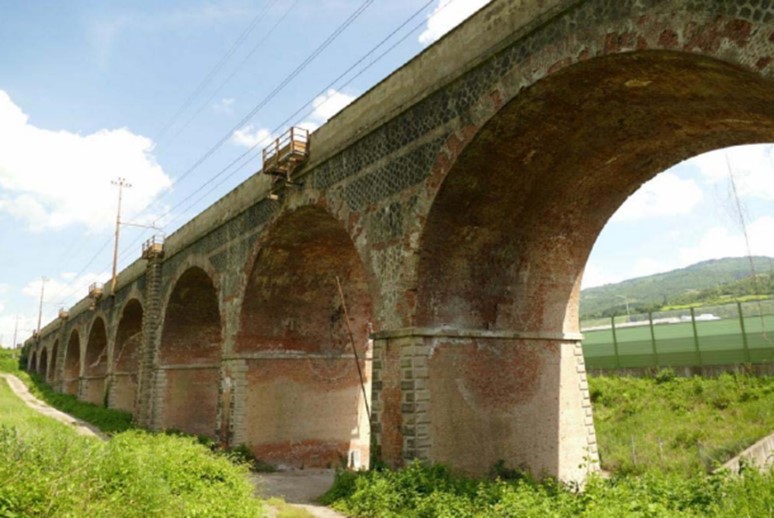AUTORE: Alessandro Lisi
TUTORS: Prof. Ing. Pietro Crespi ed Ing. Andreina Piacentini
INTERNSHIP: Alpina spa
MASTER: Master in “Progettazione sismica delle strutture per costruzioni sostenibili” a.a 2018/19
Nel campo dell’ingegneria strutturale, le costruzioni in muratura sono da sempre oggetto di studio, in quanto per via della geometria, della forma, della lavorabilità e dell’ottima prestanza e durabilità come materiale, si sono prestate a molteplici applicazioni nel corso della storia.
Nell’era moderna, con l’avvento dell’acciaio e del calcestruzzo armato, le costruzioni in muratura hanno subito una flessione nella loro applicazione, ma la presenza sul territorio di opere e manufatti in muratura, particolarmente in Italia, è ancora molto consistente.
Di grande importanza è la presenza di costruzioni in muratura, soprattutto in quei territori italiani sismicamente molto attivi, come il centro e il sud Italia; negli ultimi anni ed in seguito a fenomeni tellurici devastanti, come il sisma del L’Aquila 2009 e del centro Italia 2016, si è focalizzato lo studio per la messa in sicurezza di questo enorme patrimonio.
In questa trattazione l’oggetto di studio è un ponte multi-campata in muratura, appartenente alla grande rete infrastrutturale italiana di ponti ferroviari. Le maggiori criticità associate a questa tipologia di struttura constano nel degrado dei paramenti murati delle arcate e delle pile, dovute nella maggior parte dei casi ad infiltrazioni di acqua, decadimento dei materiali dei giunti e cedimenti fondali.
Un grande punto di forza di queste opere è l’usale applicazione della tecnologia dell’arco che permette al materiale in muratura di ottenere ottime prestazioni lavorando a compressione ed è proprio negli archi che si focalizza l’attenzione dello studio dei meccanismi globali e locali di rottura.
L’obiettivo di questo studio è confrontare i risultati derivanti da due tipologie di analisi strutturale: un’analisi dinamica lineare e un’analisi statica non lineare. Le differenze sostanziali consistono, di conseguenza, nelle azioni applicate per l’analisi dinamica, e nella caratterizzazione di un materiale che presenta un comportamento non-lineare per l’analisi statica non lineare.
La valutazione degli effetti derivanti dalle suddette analisi viene sottoposto ad un’interpretazione che tende a misurare la conservatività di un’analisi rispetto ad un’altra; nell’analisi dinamica lineare abbiamo un limite che risiede nella linearità del materiale e quindi l’approccio è più conservativo, in quanto superata una certa soglia di resistenza la rottura avviene in maniera fragile (più pericolosa sotto l’azione di un sisma); mentre, nell’analisi statica non lineare la soglia di resistenza, sotto l’effetto di un’azione agente progressiva e cumulativa, si stabilizza ad un certo valore a scapito di un aumento delle deformazioni e questo comporta un meccanismo di rottura di tipo duttile.
Lo scopo della trattazione, è incentrato sulla ricerca e lo studio dell’approccio di analisi più esaustivo per comprendere il reale comportamento strutturale dell’opera infrastrutturale.
SAFETY ASSESSMENT OF A RAILWAY BRIDGE
Masonry buildings have always been a subject of study in the field of structural engineering. Throughout history, they have lent themselves to multiple applications, thanks to their shape, workability and excellent prowess and durability as material.
In the modern era, due to the advent of steel and reinforced concrete, masonry buildings have undergone a decline in their application, however the presence of masonry works and artifacts on the territory, particularly in Italy, is still a percentage of great relevance.
The presence of masonry constructions is of great importance, especially in those Italian territories that are very active seismically, such as central and southern Italy; in recent years, and following devastating telluric phenomena, such as the earthquake of L’Aquila 2009 and central Italy 2016, studies have been focused on the safeguard of such important historical heritage.
In this discussion, the object of study is a multi-span masonry bridge, belonging to the large Italian infrastructure network of railway bridges. The main issues associated with this type of structure consist in the deterioration of the walled faces of the arches and piers, in most cases due to water infiltration, the decay of the joint materials and subsidence of the seabed.
A great strength of these works is the usual application of arch technologies, which allows the masonry material to obtain excellent performance by working by in compression, and it is precisely in the arches that it is focalized the attention of the global and local mechanisms of break studies.
The objective of this study is to compare the results deriving from two types of structural analysis, a linear dynamic analysis and a non-linear static analysis, where the substantial differences consist: in the type of actions applied for the dynamic analysis, and in the characterization of a material exhibiting non-linear behavior for non-linear static analysis.
The evaluation of the effects resulting from the aforementioned analysis is subjected to an interpretation that tends to measure the conservativeness of one analysis compared to another; in linear dynamic analysis we have a limit that lies in the linearity of the material and therefore the approach is more conservative, as once a certain resistance threshold is exceeded, the break occurs in a brittle way (more dangerous under the action of an earthquake);
while, in non-linear static analysis, the resistance threshold, under the effect of a progressive and cumulative acting action, stabilizes at a certain value to the detriment of an increase in deformations; this leads to a ductile-type breaking mechanism
The objective of this discussion is to understand which is the most comprehensive approach to understand the real structural behavior of the infrastructural work.

